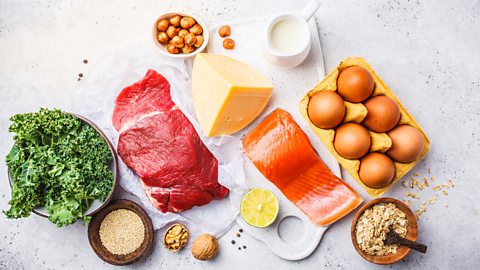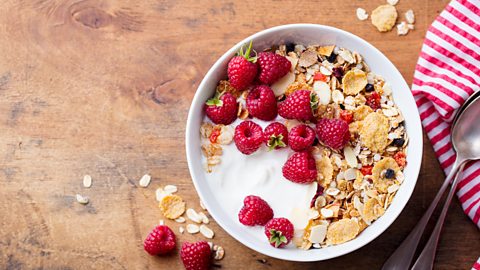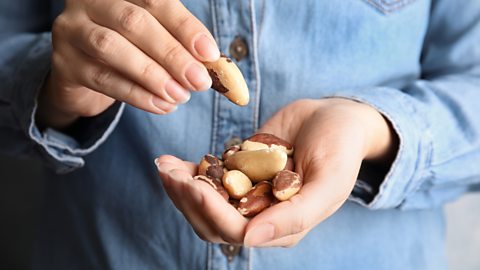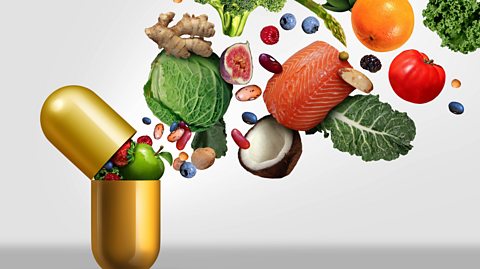Are you missing out on vital minerals?
Many people in the UK are not getting the recommended amount of some vital minerals, leading to symptoms including fatigue and lethargy, sometimes with long-term health risks. Consumption of iron, calcium and iodine is particularly low among females aged 11-18, and more than one in ten women in most age groups aren’t consuming enough of them according to evidence in the National Diet and Nutrition Survey. Males fare better, but a small percentage consume less than the lowest recommended amount of these three nutrients. Should you worry? We look at the evidence.
Iron deficiency is the world’s most common nutritional disorder

Over 30 percent of the world’s population are anaemic, many due to iron deficiency, according to The World Health Organisation – who describe it as “the most common and widespread nutritional disorder in the world”.
Iron is essential for making red blood cells, which carry oxygen around your body. If you don’t eat enough iron and develop iron-deficiency anaemia, it can increase your risk of illness and infection as well as heart and lung complications. The symptoms of iron-deficiency anaemia include tiredness, lack of energy or concentration and shortness of breath.
Over half of 11-18 year old females and over a quarter of 19-64 year old females in the UK are eating below the recommended intake of iron, according to the National Diet and Nutrition Survey*. For some, this has lead to low iron stores and/or iron-deficiency anaemia (found in 9 percent of 11-18 year-old girls, 5 percent of adult women and 1 percent of older women). The problem is significantly less common among males in the same age range. “Iron is lost through bleeding, so those who are menstruating need more iron than those who aren’t”, says dietitian Catherine Rabess.
Meat contains haem iron, the type most easily absorbed by the body, but you can also get the iron you need from non-haem plant foods, including lentils, kale, chickpeas, beans, soy and microprotein products, and many nuts and seeds. Vegetarians who eat a varied and balanced diet have been found to have no greater risk of iron-deficiency anaemia than non-vegetarians.
Iron absorption can be helped by eating foods containing vitamin C, such as citrus fruits, peppers, broccoli and kiwi. Drinking tea, coffee and dairy alongside a meal may reduce the absorption of iron from food because of a chemical they contain called phytic acid. Read more about iron on BBC Food.
Many of us don’t eat enough calcium

Calcium is the most abundant mineral in the body, with approximately 1kg stored within adult bones. However, many of us don’t eat enough of it when young to keep our bones healthy for life. More than a fifth of 11-18 year old females and 11 percent of 11-18 year old males eat below the recommended intake of calcium*. “If you don’t get enough calcium, especially when you are young and growing, you may see problems later in life, such as osteoporosis (brittle bone disease)”, says Rabess.
One sign that you aren’t getting enough calcium can be tiredness. “Calcium helps release energy from your food, so if you aren’t consuming enough of the mineral you may feel more tired than normal”, says dietitian Helen Bond.
Dairy provides more than 40 percent of the calcium intake of adults in the UK diet, and if you cut milk-based products out “it is really important to make sure you still get calcium from other sources”, says Rabess. Many wheat products in the UK are fortified with calcium, meaning breads, pastas and breakfast cereals often contain added calcium – and about 30 percent of the UK calcium intake comes from these foods. Additional sources of calcium include broccoli, fish eaten with the bones in, such as sardines and tinned salmon, and some milk alternatives and soya products, such as tofu. Organic products, including milk alternatives, are not fortified with nutrients.
Vitamin D is essential for the absorption of calcium. In the UK, it is recommened we take a vitamin D supplement during the autumn and winter months, when the sun isn’t strong enough to synthesise the vitamin in our skin. Those who spend limited time outdoors may benefit from taking supplements for additional months.
It’s particularly important to watch your iodine intake when pregnant
More than a quarter of 11-18 year old females eat below the recommended intake of iodine, according to the National Diet and Nutrition Survey*. Iodine is used for the production of thyroid hormones and needed for growth and metabolism. “One of the greatest causes of preventable brain damage is linked to low iodine intake in babies”, says Rabess. If you are trying to conceive, pregnant or breast feeding, iodine is vital for your child’s development.
Iodine deficiency can lead to an underactive thyroid gland (hypothyroidism). This can cause various symptoms, including tiredness, weight gain, constipation and feeling cold.
A study looking at iodine status in UK school girls found evidence of a mild level of deficiency in 51 percent of 14-15 year old girls.
Most adults who follow a healthy, balanced diet should be meeting their iodine requirements, according to The British Dietetic Association. But those who avoid fish and dairy products may be at risk of deficiency and may require a supplement or fortified foods. Some milk alternatives are not fortified with iodine, so always check the label.
It is important to have enough iodine, but too much can be harmful. Seaweed can be a very concentrated source of iodine, so may provide excessive amounts, which could have a negative effect on your health. For this reason, eat it “no more than once a week to be safe”, says Rabess.
Selenium intake

Nearly half of females over the age of 11 and a quarter of males aged 11-65 are eating below the recommended amount of selenium*. This rises significantly for both sexes over the age of 75. However, deficiency is rare. Selenium is found in Brazil nuts, fish, meat, eggs and bread, although the selenium content of cereals, such as wheat, is related to the amount in the soil. Selenium intake has fallen in the UK, due to European cereals replacing North American selenium-rich wheat in many products, such as bread.
Many in the UK don’t eat enough minerals
Many groups don’t eat enough potassium or magnesium. Deficiencies of these minerals are rare, but not getting enough of them long-term can affect your health.
Magnesium
Half of 11-18 year old females and over a quarter of 11-18 year old males* eat below the recommended intake of magnesium. While deficiency is rare, and normally found in severely ill patients, alcoholics and those with malabsorption disorders, intake of this nutrient is fairly low in young age groups in the UK. It is available in many foods, including green leafy vegetables, nuts, rice, fish, meat and dairy.
Potassium
Potassium deficiency normally results from diarrhoea, but low dietary potassium intakes have been observed in the UK*, particularly among females, even though the recommended daily intake for women is often lower than for men. Potassium is found in many foods, and fruit (particularly bananas), vegetables such as broccoli and parsnips, fish, shellfish, beef, chicken, nuts, seeds and pulses are useful sources.
Can you take a supplement to minimise deficiency risk?
A diet low in one mineral may well be low in others. Assessing and improving the diet as a whole will help ensure an adequate supply of most minerals for healthy people. If you want to take supplements, it is “best to speak to your GP or a health professional first, who can tell you if you need one”, says Rabess.
If you think you might be consuming too little (or too much) of a particular nutrient, type it into our nutrition calculator below to find out how likely that is, based on your age and sex.
*Statistics from the National Diet and Nutrition Study: time trend and income analyses for Years 1 to 9.
